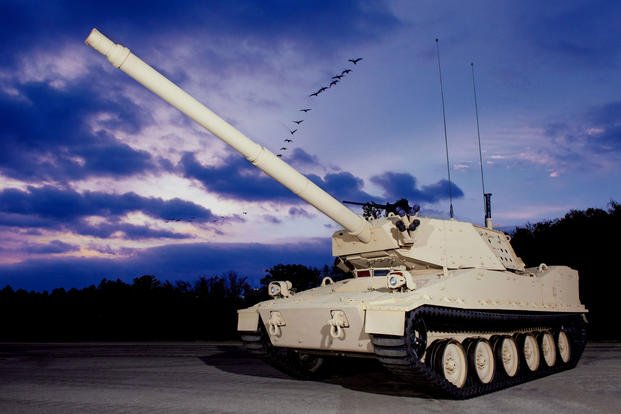The U.S. Army awarded contracts Monday to two defense firms to build prototypes of a new lightweight tank to give infantry units the firepower to destroy hardened enemy targets.
The service awarded General Dynamics Land Systems Inc. and BAE Systems Land & Armaments LP with what's known as Middle Tier Acquisition (Section 804) contracts worth up to $376 million each to produce prototypes of the Mobile Protected Firepower (MPF) system.
The two companies will build 12 prototypes each and begin delivering them to the Army in about 14 months so testing can begin in spring 2020. The goal is to down-select to a winner by fiscal 2022 and begin fielding the first of 504 of these lightweight tanks sometime in fiscal 2025.
"This capability is much needed in our infantry forces," Brig. Gen. Ross Coffman, director of the Next Generation Combat Vehicle Cross Functional Team, told reporters at the Pentagon on Monday evening.
"As we close with the enemy, at this time, there is artillery -- which is area fires that can be used -- but there is no precision munition to remove bunkers from the battlefield and to shoot into buildings in dense urban terrain to allow infantryman to close with the enemy," he said.
The MPF concept emerged several years ago when maneuver leaders started calling for a lightweight, armored platform armed with a large enough cannon to destroy hardened targets for light infantry forces. The idea was to field it to airborne units for forced-entry operations.
Parachute infantry battalions can be used to seize airfields as an entry point for heavier follow-on forces. Airborne forces, however, lack the staying power of Stryker and mechanized infantry.
The 82nd Airborne Division was equipped with the M551 Sheridan Armored Reconnaissance Airborne Assault Vehicle until the mid-1990s. Developed during the Vietnam War, the Sheridan resembled a light tank and featured a 152mm main gun capable of firing standard ammunition or the MGM-51 Shillelagh anti-tank missile.
The MPF, however, will not be air-droppable, Coffman said, explaining that Air Force C-17 Globemasters will carry two MPFs each and air-land them after an airfield has been secured.
Army requirements call for the MPF to be armed with a 105mm or possibly a 120mm cannon and rely on tracks to maneuver over terrain so it can keep up with advancing infantry, Coffman said.
GDLS and BAE beat out SAIC and its partner ST Kinetics, but Army officials would not comment on the reason the winners were chosen.
"This is an integration of mature technology. The vehicles don't exist, but the technologies -- the pieces, the systems, the subsystems -- they do exist," said David Dopp, project manager for MPF.
The plan is to conduct developmental testing to assess the prototypes' mobility, survivability and lethality.
"So these have a long-range precision weapon system on them, so over ... several kilometers, how well do they perform? How lethal are they?" Coffman said. "They are going to take a couple of these vehicles out, and they are going to shoot them with likely enemy caliber munitions. They are going to see which ones can absolutely protect our soldiers."
The Army then will move into a soldier vehicle assessment followed by a limited user test scheduled for fiscal 2021, Dopp said.
"In the soldier user test, we will execute likely missions that [infantry brigade combat team] will have in full-scale combat," Coffman said. "So this isn't driving down the road looking for IEDs; this is American soldiers engaged in full-scale combat."
-- Matthew Cox can be reached at matthew.cox@military.com.










